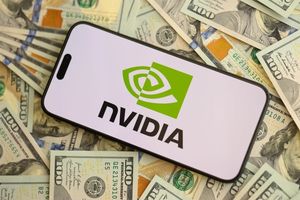
As 2025 draws to a close, a palpable sense of unease is settling over global financial markets. The meteoric rise of artificial intelligence (AI) companies, once hailed as the dawn of a new technological era, is now increasingly shadowed by investor concerns over a potential market bubble. Parallels to the dot-com bust of the late 1990s are becoming more frequent, as valuations for many AI-centric firms appear to decouple from fundamental financial metrics, prompting a cautious re-evaluation of investment strategies across the board.
The immediate significance of these concerns is already manifesting in heightened market volatility and a discernible "risk-off" shift. Investors are grappling with the challenge of distinguishing genuine, long-term AI potential from speculative hype, navigating an environment where the fear of missing out (FOMO) has driven asset prices to unprecedented levels. This critical juncture demands a deeper understanding of the underlying dynamics at play and a proactive approach to risk assessment.
Unpacking the Speculative Environment: Valuations, Hype, and Historical Echoes
The current investment landscape surrounding AI is characterized by several key factors that fuel concerns of a speculative bubble. Chief among these is the extraordinary valuation disconnect observed in many AI companies. Firms like Palantir Technologies (NYSE: PLTR) have been noted trading at over 700 times forward earnings, while industry giants Nvidia (NASDAQ: NVDA) and Advanced Micro Devices (NASDAQ: AMD) boast high price-to-earnings (P/E) ratios exceeding 50 and 45, respectively, as of late 2025. Even nascent AI startups frequently command valuations of 30-50 times their revenue, often without a clear path to profitability. This scenario eerily mirrors the dot-com era, where companies achieved absurd multiples detached from actual earnings.
Adding to the apprehension is the widening "AI promise-delivery gap." Despite significant enterprise investments, a pivotal MIT report in 2025 indicated that 95% of AI pilot projects fail to deliver measurable financial savings or profit boosts. This "learning gap" highlights a critical issue: while the narrative of transformative technology drives investor enthusiasm, the tangible returns and real-world application of AI are not consistently meeting the lofty expectations embedded in current valuations. The market appears to be pricing in future potential rather than current performance, a classic hallmark of speculative bubbles.
Furthermore, market concentration risk is a significant concern. A substantial portion of major indices is now represented by a handful of dominant AI players, often referred to as the "Magnificent Seven" tech stocks. Nvidia (NASDAQ: NVDA), for instance, reached a staggering $5 trillion valuation in November 2025, constituting approximately 8% of the entire S&P 500 index. Such extreme concentration means that a substantial correction in these bellwethers could trigger widespread ripple effects across the market, exacerbating any downturn. The prevalence of FOMO, amplified by social media, and reports of circular financing—where leading AI tech firms invest in each other to artificially boost valuations—further underscore the speculative nature of the current environment.
AI's Ripple Effect: Navigating the Competitive Landscape Amidst Bubble Fears
The specter of an AI-driven market bubble has profound implications for AI companies, established tech giants, and agile startups alike. Companies with robust, revenue-generating AI products and strong balance sheets, such as Microsoft (NASDAQ: MSFT), Alphabet (NASDAQ: GOOGL), and Amazon (NASDAQ: AMZN), are generally better positioned to weather a potential downturn. Their diversified business models and substantial cash reserves provide a buffer against market volatility, allowing them to continue investing in AI research and development even if valuations compress. These tech giants also benefit from their existing infrastructure and vast customer bases, enabling them to integrate AI solutions more seamlessly and demonstrate tangible value.
However, the competitive implications are intense, particularly for highly-valued, pure-play AI companies and startups. Firms whose valuations are primarily based on future potential rather than current profitability face significant scrutiny. A market correction could severely impact their ability to raise further capital, forcing many to scale back operations or even cease to exist. This environment favors companies that can demonstrate clear use cases, measurable ROI, and a sustainable business model, rather than those relying solely on speculative growth. The "picks and shovels" providers—companies supplying essential AI infrastructure like data centers and high-end chips (e.g., Nvidia (NASDAQ: NVDA), despite its high valuation)—might also benefit from continued demand for underlying technology, albeit with their own valuation risks.
Potential disruption to existing products and services is also a key factor. While AI promises to revolutionize various industries, companies that have over-invested in unproven AI technologies or failed to integrate them effectively into their core offerings could find themselves at a disadvantage. Strategic advantages will increasingly accrue to those that can effectively bridge the "AI promise-delivery gap," translating AI capabilities into tangible productivity gains, innovative products, and new revenue streams. Market positioning will depend less on buzzwords and more on verifiable impact, forcing a recalibration of strategies across the AI ecosystem.
Broader Implications: A Tipping Point for the AI Revolution?
The current investor apprehension about an AI-driven market bubble extends far beyond the immediate financial implications, fitting into a broader narrative of technological disruption and economic cycles. The situation evokes comparisons to previous periods of speculative fervor, such as the railway mania of the 19th century and, most notably, the dot-com bubble. In both instances, revolutionary technologies were met with immense enthusiasm, leading to overinvestment and inflated valuations before a subsequent market correction separated viable enterprises from unsustainable ventures. The key difference today is the foundational nature of AI, which is poised to permeate almost every industry, suggesting that while a bubble may burst, the underlying technology's long-term trajectory remains robust.
The impacts of a potential bubble burst could be significant, ranging from a contraction in venture capital funding for AI startups to a broader market correction affecting indices heavily weighted with tech stocks. This could lead to job losses in the AI sector, a slowdown in certain research areas, and a more conservative approach to AI adoption by enterprises. Potential concerns include a loss of public trust in AI's economic benefits if initial promises are not met, and a diversion of capital from other critical technological advancements. The Bank of America's October 2025 Global Fund Manager Survey, revealing that 54% of institutional investors believe the AI boom constitutes a bubble, underscores the widespread nature of this concern.
However, this period of introspection could also serve as a necessary cleansing, forcing the industry to mature and focus on sustainable, value-driven applications of AI. It could lead to a more rational allocation of capital, favoring companies with strong fundamentals and clear pathways to profitability. Comparisons to previous AI milestones, such as the advent of deep learning or the rise of large language models, highlight that while innovation often comes with periods of irrational exuberance, the core technological progress continues. The current environment is a test of the AI industry's resilience and its ability to transition from a phase of intense speculation to one of practical, widespread integration.
The Road Ahead: Navigating the AI Investment Landscape
Looking ahead, the AI investment landscape is poised for significant developments, both near-term and long-term, as the market grapples with its current valuations. In the near term, experts predict continued volatility and increased scrutiny of AI companies' financial performance. We are likely to see a greater emphasis on profitability, free cash flow, and tangible return on investment from AI projects, rather than just growth potential. This could lead to a divergence, where well-capitalized companies with proven AI solutions continue to thrive, while those built on speculative hype struggle to secure further funding. Potential applications on the horizon will need to demonstrate clear economic value, such as AI-driven automation that significantly reduces operational costs or new AI products that open up entirely new revenue streams, moving beyond pilot projects to widespread deployment.
Longer-term developments will likely involve a consolidation of the AI market, with stronger players acquiring smaller, innovative startups that possess valuable technology but lack the financial resilience to withstand a downturn. We can also expect increased regulatory attention on AI, not just concerning ethics and safety, but also regarding market concentration and potential anti-competitive practices. Challenges that need to be addressed include the "learning gap" identified by MIT, where enterprises struggle to effectively integrate and leverage AI for measurable financial gains. This points to a need for more robust implementation strategies and a focus on organizational capability building alongside technological acquisition.
Experts predict that while a market correction for certain overvalued AI stocks is a distinct possibility, the underlying technological revolution of AI will persist. Jamie Dimon, CEO of JPMorgan (NYSE: JPM), believes "AI is real" but also anticipates that some current investments will be wasted. The consensus is that smart money will increasingly flow into companies providing essential "picks and shovels" infrastructure, those demonstrating clear integration capabilities, and firms with diversified portfolios that can mitigate concentration risk. What happens next will depend heavily on the industry's ability to transition from a period of speculative enthusiasm to one of sustainable, value-driven growth.
Charting the Future: A Prudent Path Through AI's Evolving Markets
In summary, the current investor concerns surrounding a potential AI-driven market bubble represent a critical inflection point for the technology sector. Key takeaways highlight the alarming disconnect between soaring valuations and fundamental financial performance for many AI companies, the significant market concentration risk posed by a few dominant players, and the unsettling parallels to past speculative bubbles like the dot-com era. While the transformative potential of AI is undeniable, the market's current dynamics demand a cautious and analytical approach.
This development's significance in AI history cannot be overstated. It marks a transition from unbridled optimism to a more mature and discerning phase, where the focus will shift from "what AI can do" to "what AI is doing to generate tangible economic value." It serves as a vital reminder that even revolutionary technologies are subject to market cycles and the laws of economics. The long-term impact will likely be a more robust and sustainable AI industry, built on proven applications and sound business models, rather than fleeting hype.
In the coming weeks and months, investors should closely watch for continued market volatility, any significant shifts in funding for AI startups, and the financial performance reports of major AI companies for signs of revenue generation and profitability. A prudent investment strategy will emphasize diversification, value-based selection, and a focus on companies that provide essential AI infrastructure or demonstrate a clear ability to integrate AI for measurable returns. The journey through AI's evolving markets will require vigilance, strategic foresight, and a commitment to fundamentals over speculation.
This content is intended for informational purposes only and represents analysis of current AI developments.
TokenRing AI delivers enterprise-grade solutions for multi-agent AI workflow orchestration, AI-powered development tools, and seamless remote collaboration platforms.
For more information, visit https://www.tokenring.ai/.





